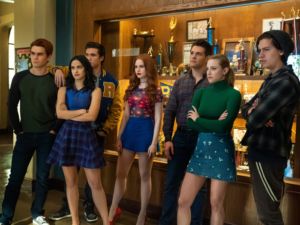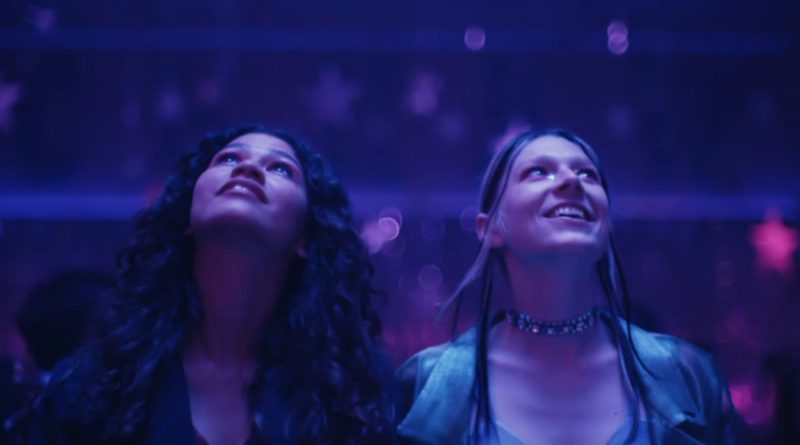Genres in Television- Teen Drama
Teen Drama

If you’re like me, there was nothing quite like getting home from school, tossing your backpack to the ground, and grabbing the remote to turn on your favorite teen drama. A lot of teen dramas are looked down upon the way that soap operas are. They aren’t exactly known for their incredible writing or complex story arcs, but that’s completely fine. That isn’t what they’re trying to do. Their purpose is in the name: they’re there to create the most mind-blowing, outlandish, mind-capturing drama. And they do it well.
Brief History
Despite the popularity of teen dramas today, they are a relatively new genre. The closest shows to teen dramas that existed prior to the 90s were family dramas and sitcoms that gave adolescent characters their own arcs. A great example of this is Never Too Young, which aired between 1965 and 1966.
90210 Beverly Hills, which first aired in 1990 and ran over ten seasons, is what truly inspired the boom in teen dramas. The show was extremely popular, hence the long run, and continues to be iconic today. It produced several big-name stars and inspired a lot of the teen dramas we know and love today. Degrassi High, also airing in the 90s, was one of the first shows to focus solely on teenagers too. From these successful shows came teen-drama classics such as Gossip Girl and One Tree Hill. Entire networks became dedicated to this genre, such as the WB–now CW–network. This network produced iconic shows such as Dawson’s Creek and Buffy the Vampire Slayer.
Today, the genre continues to be a hit. Euphoria and Riverdale are heavily influential pieces of pop culture.
Conventions
Some conventions of Teen Dramas are relatively simple and obvious: there are teens, and there is drama. The typical formula is that there are a group of close-knit friends, and the show centers around their shared environment. For example, Gossip Girl follows a group of elite teens on the Upper East Side of New York. On the other hand, Dawson’s Creek follows a group of typical teens in a small coastal town. The shows follow a coming-of-age formula, focusing on relatable teen dilemmas to a heightened level. Relationships are more dramatic, stakes at school are raised, home life is mandatorily torrential.
Along with the typical teen dramas are merges of genres. The supernatural teen drama became especially popular after the success of Twilight, with shows like Teen Wolf and The Vampire Diaries. Mystery and teen drama collide in shows like Riverdale and Pretty Little Liars. As with every genre, the teen drama genre has the potential to combine with nearly any genre and become more interesting.
Popular Shows
1. Gossip Girl

As mentioned above, the original Gossip Girl followed a group of elite teenagers as they navigated high school and their lives as socialites. The iconic frenemy relationship between Blair and Serena was a staple of the show, as was Blair’s on and off again (and admittedly questionable) romance with Chuck Bass. There has recently been a reboot airing on HBO Max, following a similar premise, but with more references to activism and movements such as #MeToo.
2. Dawson’s Creek

Dawson’s Creek remains one of the most well-known and loved teen drama. Airing in 1998 and well into the 2000s, the show centered around Dawson Leery and his group of friends. Funnily enough, just about every character on the show became a fan favorite except for Dawson. This show also featured one of television’s first kisses between gay men. The love triangle between Joey, Pacey, and Dawson was a staple of the show.
3. The Vampire Diaries

The Vampire Diaries is arguably the most successful supernatural drama, as it now has two spin-off series, one of which is still airing. The show used the post-Twilight vampire mania to succeed, although the books it is based off preceded the Twilight series. The show followed Elena Gilbert as she discovers the world of supernatural creatures: vampires through her boyfriend, Stefan, and witches from her best friend, Bonnie. As the show goes on, we discover plenty of other supernatural beings exist in town.
4. All American

All American, another CW hit, follows Spencer James (based on the real-life NFL star Spencer Paysinger) as he navigates a new high school and his flourishing football career. The show features two seemingly rival high schools, Crenshaw and Beverly Hills. Spencer must balance his life between his old school and new one. For a period of time in 2020, All American was Netflix’s number one show.
5. Sex Education

Sex Education has been praised for embracing the topic of teen sex education in schools–and how much it sucks. The show also features characters of varying sexualities, with as many queer characters as straight ones. Sex Education takes on topics considered taboo in the genre, such as queer sex, women’s bodily autonomy rights, and sexual assault.
6. Riverdale

Riverdale, while infamous for some of it’s…interesting writing choices…is nonetheless one of the most popular teen dramas airing today. The show is based off of the Archie and Betty and Veronica comics. Starting off as a murder mystery, the show has since begun exploring supernatural elements. All the while, the iconic love triangle between Archie and best friends Betty and Veronica have been at the forefront.
7. Euphoria

Critically acclaimed Euphoria is one of the most unique shows in its drama. The show follows Rue as she struggles with drug addiction as a high schooler. It also features one of the first trans leads in teen dramas as Rue’s primary love interest. Several other characters have become fan favorites, such as Maddy and Cassie. The show’s second season is highly anticipated and begins airing this coming week.
Underrated Pick
Everything Sucks!

A short-lived, but extremely well done show on Netflix was Everything Sucks!. This teen drama followed a group of teenagers entering their freshman year of high school. Before Sidney Sweeney snagged her role on Euphoria, she made her mark as Emaline. While the show took place in 1990, it aired on Netflix in 2018 before being promptly canceled.
Cultural Impact
Teen dramas have done a lot of good for representation in the media…and a lot of bad.
Shows like Glee and more recently Sex Education fought to normalize queer high schoolers. I know so many people who first saw themselves represented in the Glee characters. Sex Education is a more recent drama that showcases various identities, including often forgotten ones in media such as asexuality and pansexuality. Meanwhile, some teen dramas failed to ever acknowledge their main characters as anything but straight, and many of them queerbaiting their audience. The Vampire Diaries, for example, took 7 seasons to introduce their first queer couple, and promptly killed them with hell fire. Yes, they killed the first lesbians in their universe with hell fire.
Something else to note about teen dramas, at least those at the forefront of media, is that they are overwhelmingly white. This isn’t unique to the genre, but it is worth mentioning. If teen dramas are meant to provide representation, we must think about which teens we are representing. Even when there are nonwhite characters on the show, their treatment is never equal to that of their white counterparts. The Vampire Diaries, for example, is infamous for their poor treatment of Bonnie Bennett, the only black main character on the show. That isn’t to say there haven’t been recent improvements. While the original Gossip Girl featured little to no people of color, the reboot is primarily people of color. Still, there is a lot of progress to be made. We have to start asking what teenagers we are representing, and who our audience is.
There have been harmful tropes used in teen dramas as well. Teacher-student relationships were extremely popular in teen dramas for a long period of time, and are still featured in more recent dramas like Riverdale and the Gossip Girl reboot. One of the most notable and romanticized examples of this trope is Ezra Fitz and Aria Montgomery from Pretty Little Liars. The couple met when Aria was a minor and dated as a student and teacher throughout the series, ultimately being married at the end. This romanticized portrayal of such a despicable power imbalance is extremely dangerous considering their audience.
Still, teen dramas provide teens with a mirror. They are able to relate to characters during a period of time in their lives which is often very lonely. These shows can provide hope, or at the very least, an entertaining distraction and mode of escapism.

